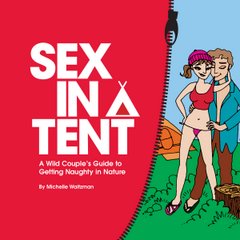First off, sorry for the long absence. I've been busy guiding a group of students and journalists from India around New Zealand for the past couple of weeks. It's been pretty full on, so no time for blogging. But I'm back now. Did you miss me?
One of the highlights of the trip for the visitors was, of course, Queenstown. New Zealand's adventure capital also happens to be one of the most beautiful places in the world. Jagged mountains covered in snow, a stunning blue lake fed by even more stunning glacially fed rivers, and all nestled in the alpine surroundings of the Southern Alps. It's hard to argue with the natural beauty of the place.
However, as Queenstown's popularity has increased, so have the number of "adrenaline" activities that run commercially in it's most beautiful places. The Shotover and Kawarau Rivers are gorgeous settings with towering granite canyons and bright turquoise waters. But the peace you'd expect to find in such a setting is disturbed by the roar of jet boats tearing through at high speed, filled with shrieking tourists.
 Other river spots have become the setting for bungy jumps. The historic Kawerau Bridge is picture perfect, but for 20 years has been the home of AJ Hackett Bungy - the first commercial bungy jumping operation in the world.
Other river spots have become the setting for bungy jumps. The historic Kawerau Bridge is picture perfect, but for 20 years has been the home of AJ Hackett Bungy - the first commercial bungy jumping operation in the world. 
The mountains themselves are home to ski fields over the winter, and Queenstown is the après ski party capital of the Southern Hemisphere, so there isn't much chance of quiet reflection as you admire the peaks.
So has adventure tourism ruined the natural beauty of Queenstown? Or is it elitist to want to keep such a place in its natural state, knowing that this would prevent most people from having a chance to see it? It's a tough call, and one that has to be made in many areas of natural beauty.
In New Zealand there seems to be a tendency to "sacrifice" the most popular and publicized destinations, making them suitable to large visitor numbers. This is not only true of Queenstown, but also places like Milford Sound, The Tongariro Crossing, and Abel Tasman National Park. By offering easy access and modern facilities, tourists are chanelled into these few chosen areas to appreciate New Zealand nature.
That leaves the rest of the backcountry more or less untouched so that those of us who don't mind a bit of hard work in return for a pristine setting can hold onto some of the amazing scenery for ourselves.
I'm not saying that Queenstown shouldn't be touristy, or that tourism is a bad thing for New Zealand. In fact, I think tourism is necessary and good for New Zealand. But I can't help thinking, whenever I am in Queenstown, that it would have been wonderful to see the place 100 years ago when it was just a little village in the mountains.








3 comments:
I randomly found your blog and am glad I did. I own 5 different tents that should count for something. I live in Ohio and do a lot of camping in Canada. Will probably never get to visit New Zealand except thru blogs etc. Good luck with your book
Joe Todd
Hi Michelle.
Nice to have you back.
As a walker with friends in NZ, I've been to the busy spots as well as seeking solitude.
I think the scenario you describe is pretty widespread and probably inevitable: domestic and international tourists will always gather at the honey-pots, and most are grateful for the infrastructure and the quick fix.
But I think the NZ outdoors is big enough to cope - as you suggest, there's always a less-visited neighbouring valley and peak if you look beyond the obvious. That said, I had one of my best ever NZ experiences in Milford Sound, meeting a pod of dolphins when scuba diving. It didn't feel crowded in the sound itself.
And I don't remember seeing any infrastructure on the Tongariro crossing other than a path, but then I walked it in thick fog and didn't see much ...
Over here in the UK, Snowdon is one of our busiest peaks, and the highest in England and Wales - you have to go to Scotland to get higher. Snowdon has a railway all the way to a cafe at the summit, providing access for all, and it's a weird experience arriving by foot into such an urban crowd at the top of a big mountain. But if you wild camp off the summit or head further south in the same national park you can have the landscape to yourself.
Nice.
Hey Michelle,
you done a great job on your blog, i really appreciated your time.
What about the camping near the lakes area? are they dangerous?
Post a Comment